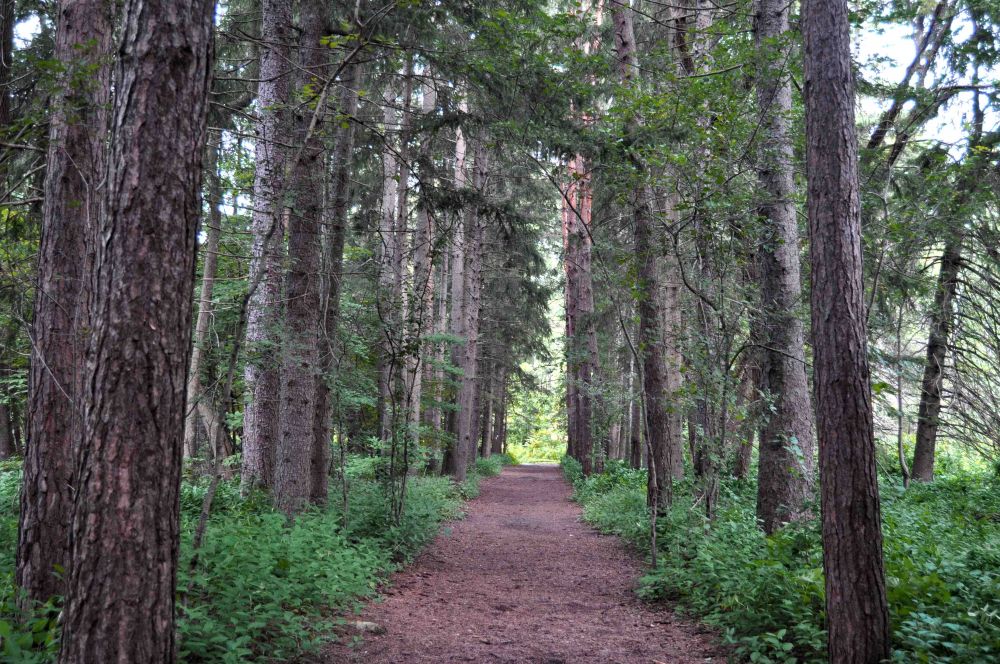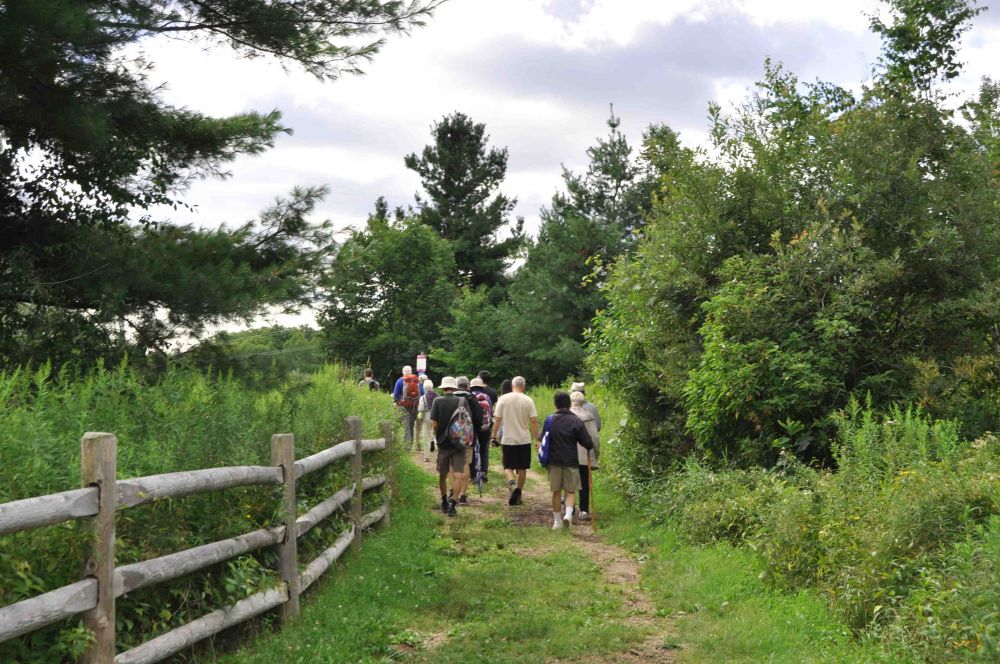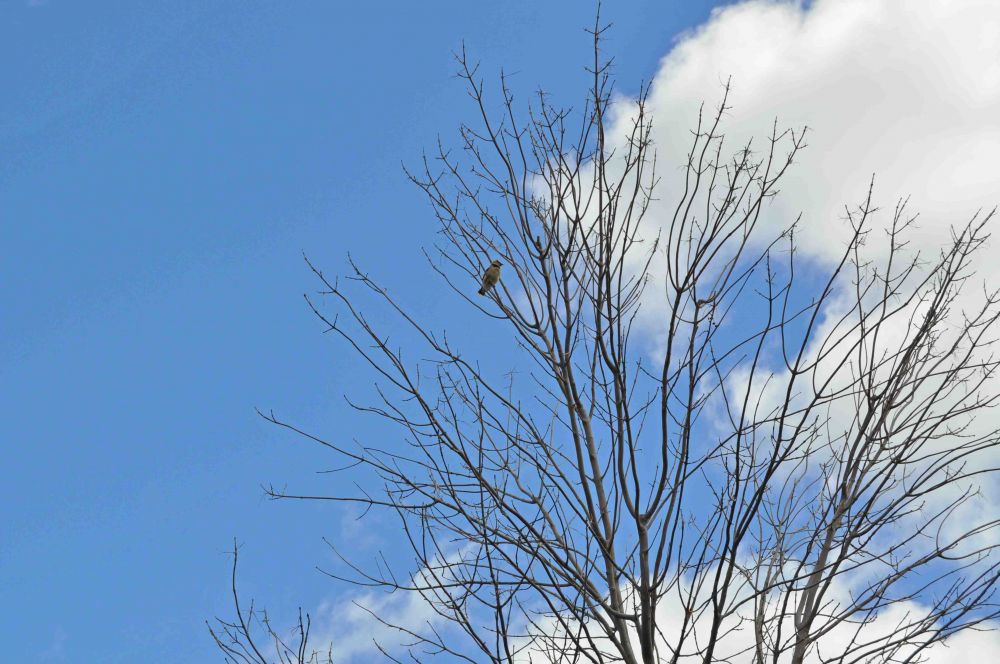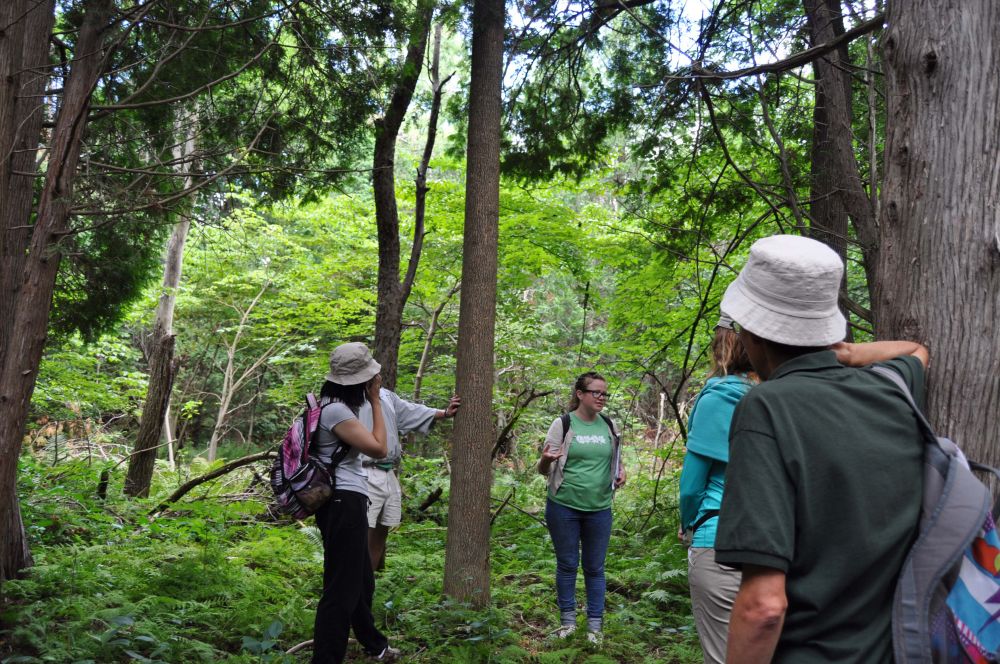
As we started out across one of the park’s beautiful meadows, we couldn’t help but notice that we were surrounded by one of the main issues facing so many of Canada’s natural spaces: invasive species. At first glance, the meadow appeared to be a healthy mix of native grasses and wildflowers, such as New England aster and milkweed. Once we took a closer look, however, it became clear that the native plants were being overrun with dog-strangling vine, buckthorn and Norway maple. These invasive plants mean trouble for our native species, as they spread prolifically and out-compete almost everything else. Dog-strangling vine is a plant that wraps its shoots around other plants and trees, eventually choking them. They also spread much faster than most other plants, as they can produce as many as 28,000 seeds per square metre! The berries of buckthorn contain a laxative, meaning that its seeds are quickly spread by birds that feed on them. Norway maples produce such a dense shade that most species struggle to grow underneath their thick canopies. These tactics make these species very successful, at the expense of the biodiversity of our native meadows and forests.

Luckily for us (and our forests!) these invasive species thrive in clearings, so they were soon far behind us. As we ventured into the lush forests of Rouge Park, our discussion quickly changed from the challenges facing the park to the spectacular beauty surrounding us. To the left of us, the slope was dense with majestic evergreens, such as hemlocks, white pines and cedars. This north-facing forest was cool and shady, with very little understory growth. We compared this with the south-facing slope to our right, which was made up of deciduous species like sugar maple, red and white oak and ironwood. The canopies of these beautiful trees were much more open than the evergreens on the other side of the path, allowing for a thick and diverse understory of ferns, trilliums and saplings. The impressive sugar maples holding on to the sides of the slope were not only beautiful, but also doing important work: their root systems prevent soil erosion, helping to keep Rouge Park’s forests so beautiful!
One of the most interesting discussions revolved around the towering groves of black walnut along the trail. The rich walnuts of these beautiful trees were once an important winter food source for settlers, so these trees were likely planted when farms and houses existed throughout the forest. The roots of these trees emit a chemical called juglone, which prevents many species from growing nearby. This is one way of reducing competition for resources, ensuring that the black walnut trees have enough nutrients and water. The effect was striking, as there was a very defined circle around the black walnut trees where the species makeup would change drastically. Just like invasives, some native species have tricks to increase their chances of survival!

A highlight of the tour was found in a beautiful and thick stand of old eastern white cedars. While we were talking about their importance, and how some of the cedars found on the Niagara escarpment are over a thousand years old, we saw a downy woodpecker feeding on a tree less than ten feet from where we were standing! It turns out that the woodpecker was feeding on an ash tree infested with Emerald Ash Borer, an invasive pest that is killing ash trees in Toronto, York Region and beyond. This is especially devastating in urban environments, as pollution-tolerant and hardy ash trees are very common street trees. This led to a lively discussion about what their loss means to the biodiversity of our urban forest. We all agreed that keeping biodiversity in mind when planting in urban environments is of great importance, to ensure that we have forests that aren’t at risk of being significantly depleted by species-specific pests or diseases.

As we came to the end of our lively tour, we found ourselves at a series of man-made ponds, each with its own distinct ecosystem. A power station on the other side of the ponds was a reminder of how close we were to the city. It was easy to forget while wandering through such a lush landscape, chatting about the importance of biodiversity! And to cap it all off, Rouge Park and LEAF are OPG Biodiversity Program partners, so it was amazing to spend such a beautiful morning together exploring such an important forest oasis in the city!
LEAF’s Tree Tours are supported by Ontario Power Generation. Lisa Moore is the Residential Planting Programs Assistant at LEAF.
